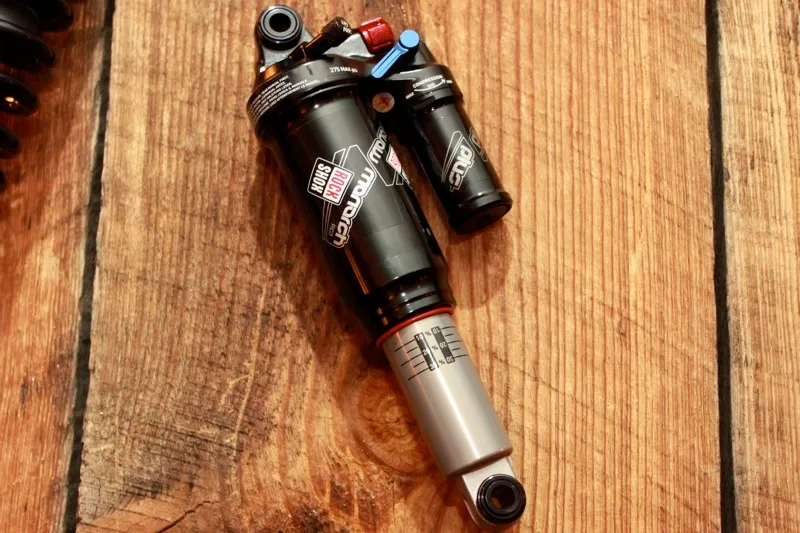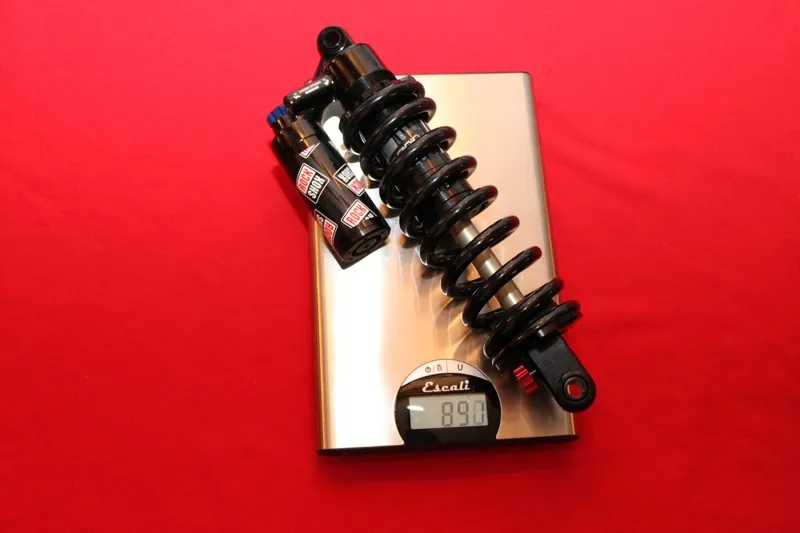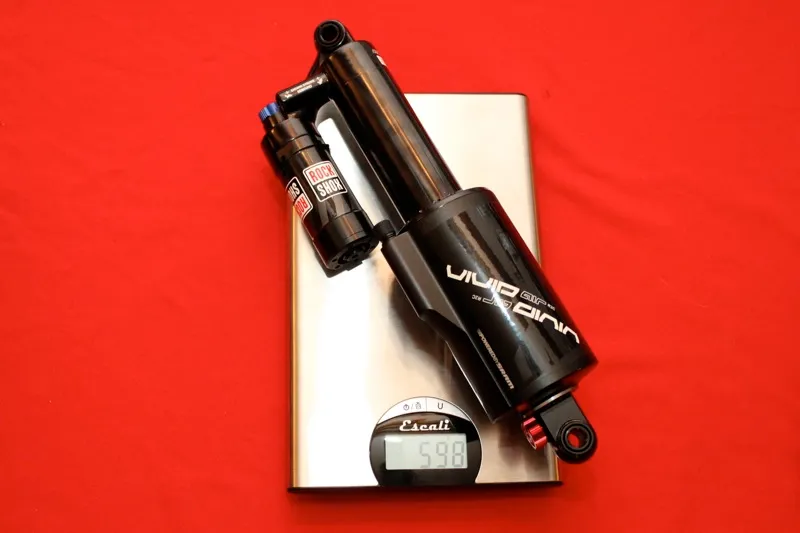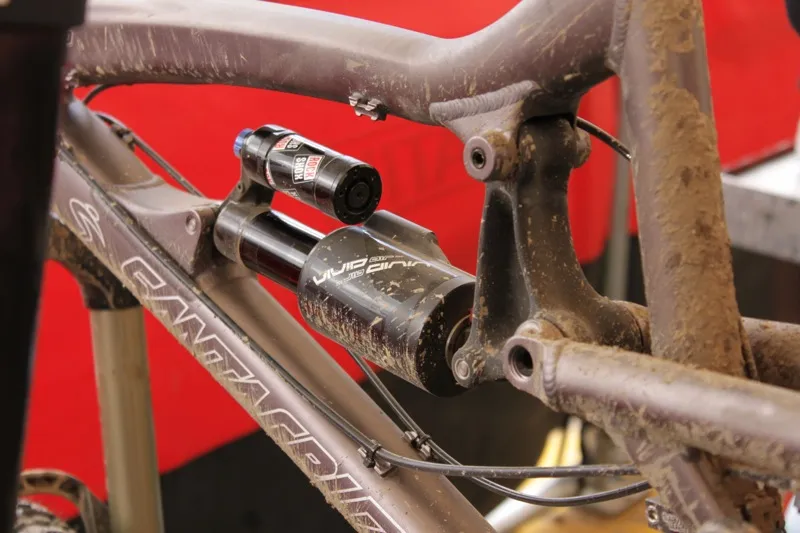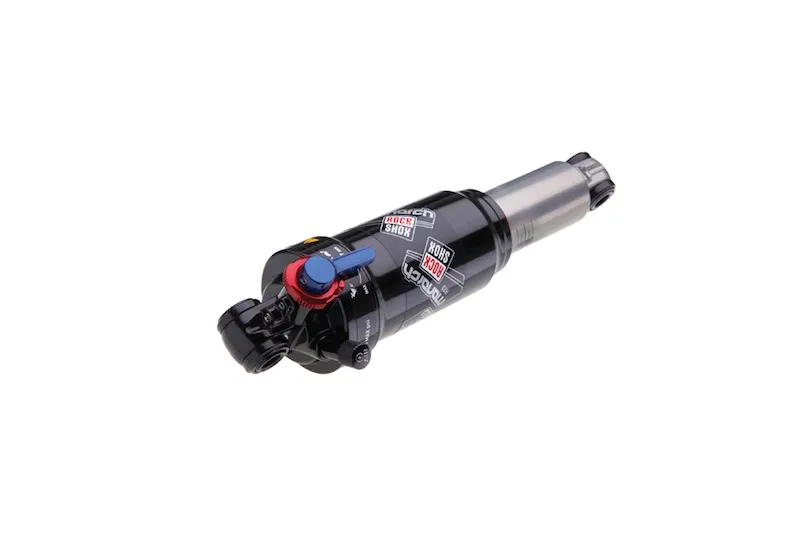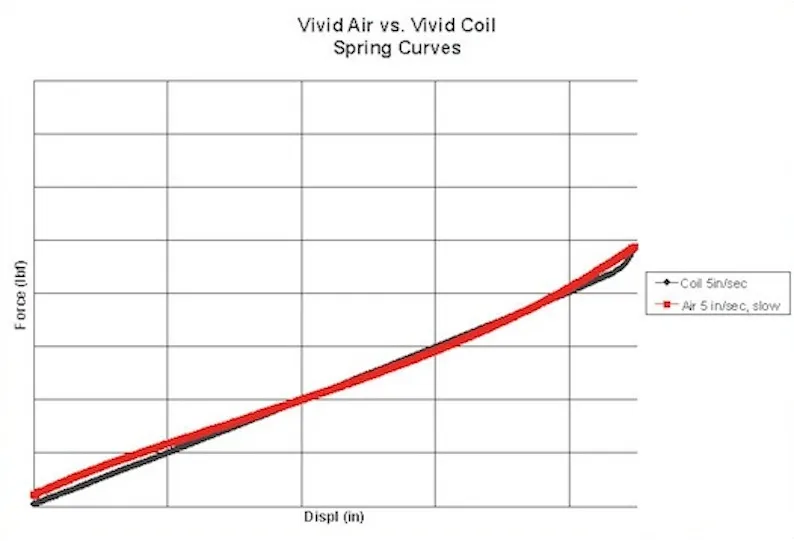We've already shown you RockShox’s cross-country and trail offerings for 2011. On the long-travel side of things, the big news is the new Vivid Air downhill shock, which we've managed to get a first ride on.
RockShox have also used lessons learned during the two-and-a-half-year the development of the Vivid Air to update the Vivid Coil and produce a new Monarch Plus shock for all-mountain bikes, plus they've given the standard Monarch air shocks new tunes to improve small bump sensitivity.
Riding the Vivid Air
We were given three runs down an intermediate level downhill trail with van shuttles from finish to start to get acquainted with the Vivid Air (US$620). Our tester is a sport class downhiller and the terrain, though fast, didn’t call for a full downhill rig. We rode Santa Cruz Nomads equipped with Lyrik Solo Air forks and Avid’s new Code brakes.

We were able to ‘ring the bell’ and get full travel during shuttle runs on our Vivid Air sample
Our first impressions of the Vivid Air are that while it handles very much like a coil spring in the parking lot, it feels very different at speed. It definitely rides higher in its stroke than the Vivid Coil, which can easily be felt. And while it wasn’t ever harsh, it was firmer feeling than any of the coils we’ve recently ridden. It was unfortunate that we weren’t able to ride the air and coil versions back to back – we'll bring you that comparison later in the season.
Vivid Coil
RockShox's engineers learned loads during the development of the Vivid Air and all of the damper improvements made for the air shock are added to the already proven Vivid Coil ($373) for 2011.
The biggest change is the Hot Rod rebound adjuster rod, which incorporates a section of thermoplastic into its shaft. When the shock heats up and its oil temperature increases, thereby reducing its viscosity, the thermoplastic expands, adjusting the beginning stroke rebound port.
This increases the damping, automatically compensating for the thinner oil and keeping the shock's performance consistent. The Hot Rod is said to reduce the fade of the Vivid damper by 42 percent.
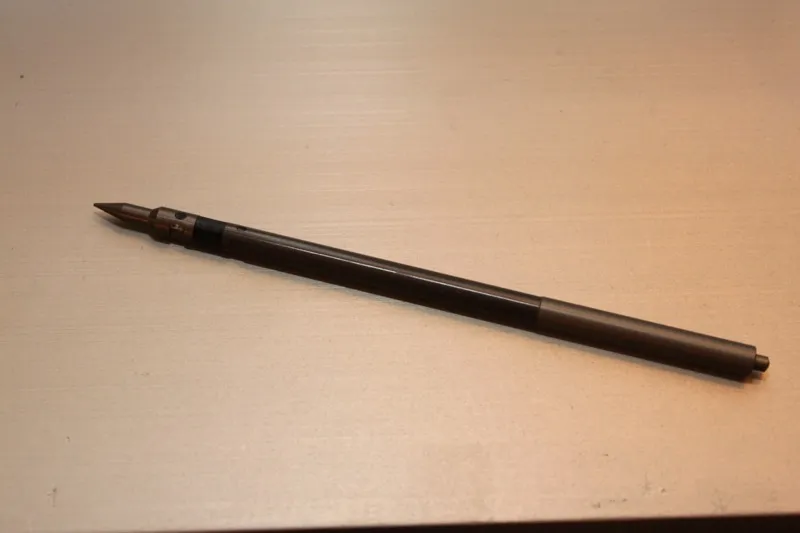
RockShox’s Hot Rod rebound adjuster rod incorporates temperature-sensitive thermoplastic in its shaft that expands when heated to increase rebound damping
Part of the challenge in the Vivid Air’s development was reducing internal friction so it would feel as supple as a coil. RockShox redesigned the Vivid’s pistons, glide rings, seals and overall tune. Because the damping circuitry of the air and coil shock works similarly, they've managed to carry over all of the same improvements to the coil damper.
Monarch Plus
If you’ve ridden a Lyrik, RockShox’s long-travel trail fork, you’re probably impressed by how far you can push it. RockShox’s media manager Tyler Morland affectionately calls it his mini-downhill fork. The performance goal with the new Monarch Plus rear air shock ($N/A) was to complement Lyrik, both in terms of downhill prowess and light weight.
The Monarch Plus RC3 (the acronym means it has one rebound and three compression adjustments) weighs just 335g (claimed). It’s sprung by the newly refined Solo Air spring and draws features from both the previous Monarch models and the new Vivid Air.

RockShox's Jeremiah Boobar unveils the new Monarch Plus rear shock
The top-end damper has Dual Flow rebound and compression circuits, with a piggyback reservoir for increased oil volume and flow. RockShox's engineers say that adding the deep stroke Dual Flow rebound circuit leads to better compression performance because the shock can recover quicker from hits that bring it into the latter third of its travel. This technology was first pushed with the launch of Vivid Coil but is now permeating throughout the entire line.
The Monarch Plus RC3 has externally adjustable beginning stroke rebound and a three-position low-speed compression adjustment lever. The larger oil volume and shock body should help it deal with the speeds and heat associated with longer-travel trail bikes, yet it's significantly lighter than rival shocks in this category. It won’t be available for sale until the autumn.
Monarch: Solo Air improvements
“The number one request we’ve received is for improvements to small bump ride,” said Sander Rigney, RockShox's product manager. “We’ve developed a new Solo Air spring system, which applies to Monarch, Monarch Plus and carries over to our Vivid Air shock as well. There isn’t one point-to thing that makes the difference between the old Monarch and new Monarch; it’s a series of refinements to all of the components.
"We looked at everything from positive and negative air volumes to pressure ratios, surface finishes for the ID of the damper body, piston, air can, the type of sealing system for the piston and its lubrication .... All of these contribute to a vastly superior small bump ride.”
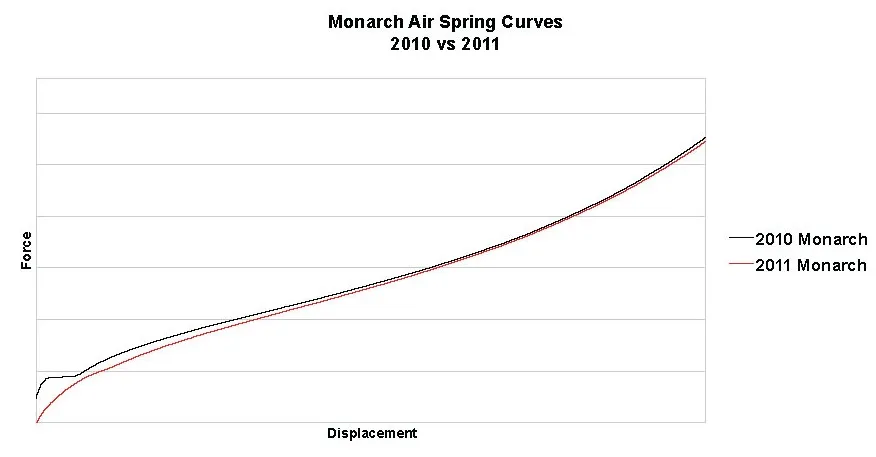
A comparison of the initial breakaway force required for the 2010 Monarch (black) and 2011 Monarch (red)
The 2011 Monarch has a new sealed detent system for each external adjustment that should help it retain its like-new feel for longer than the current design. The new shock also has wider compression and rebound ranges between the different tunes, with fewer rebound clicks but a similar overall range. This is said to make each click more obvious and improve tuning. All of RockShox’s 2011 Monarch shocks feature Dual Flow rebound and range in cost from $253-$286 (UK prices TBC).
